
Are you ready for FRTB? Five questions to ask yourself
The Fundamental Review of the Trading Book (FRTB) is one of the biggest and most significant market risk regulatory changes in the past two decades. If you don’t have a firm plan in place yet, or if you are a little nervous about the plan you do have, look no further. To see if you are ready, ask these five questions.
How do you plan to meet the FRTB timeline?
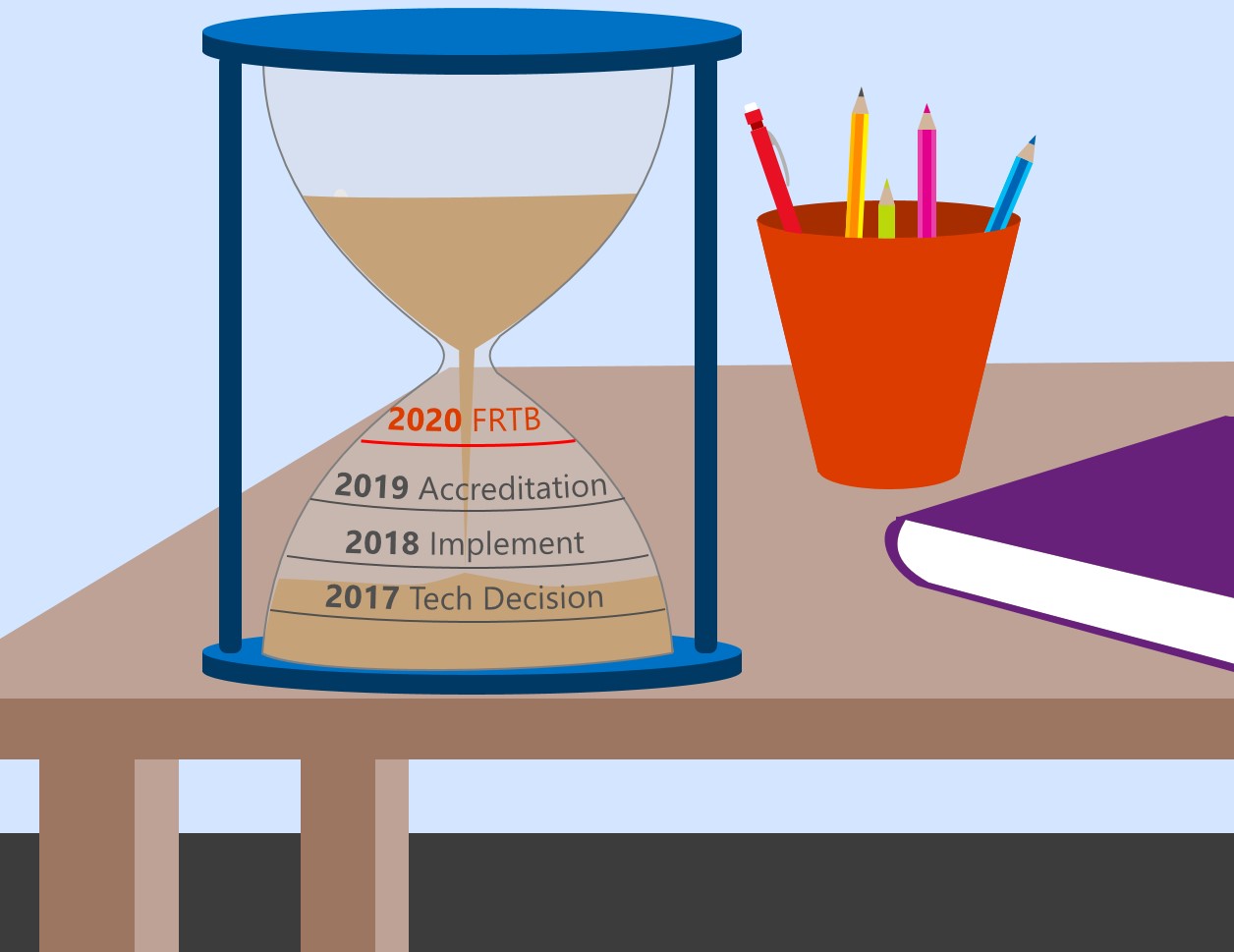 By January 2020, banks must be FRTB compliant. This may seem like a long time but the road to compliance is difficult and complex, so it’s critical to act now. As the accreditation of the Internal Model Approach (IMA) takes 12 months, it is essential to initiate the accreditation process no later than January 2019. But, prior to that, it is necessary to implement and test new technology systems to ensure they accommodate all of the institution’s needs. All things considered, the FRTB implementation and approval process takes about 3 years. To have enough time, and avoid getting stuck in the regulatory queue, banks should begin preparing as soon as possible in 2017.
By January 2020, banks must be FRTB compliant. This may seem like a long time but the road to compliance is difficult and complex, so it’s critical to act now. As the accreditation of the Internal Model Approach (IMA) takes 12 months, it is essential to initiate the accreditation process no later than January 2019. But, prior to that, it is necessary to implement and test new technology systems to ensure they accommodate all of the institution’s needs. All things considered, the FRTB implementation and approval process takes about 3 years. To have enough time, and avoid getting stuck in the regulatory queue, banks should begin preparing as soon as possible in 2017.
Do you know what the potential impact of FRTB will be on your regulatory capital?
While the Basel Committee on Banking Supervision estimates that capital requirements will increase by 40%[1], the increases could amount to much more. A recent industry study projected that banks could see regulatory capital requirements rise 2.4 times their current levels using the Standardized Approach (SA), and 1.5 times with IMA[2]. Although estimates of potential capital increase vary by trading desk, and it will be difficult to know the actual impact FRTB will have, the most prepared banks have already started the process of determining which modeling approach they will use.
How do you intend to optimize capital requirements for trading desks?
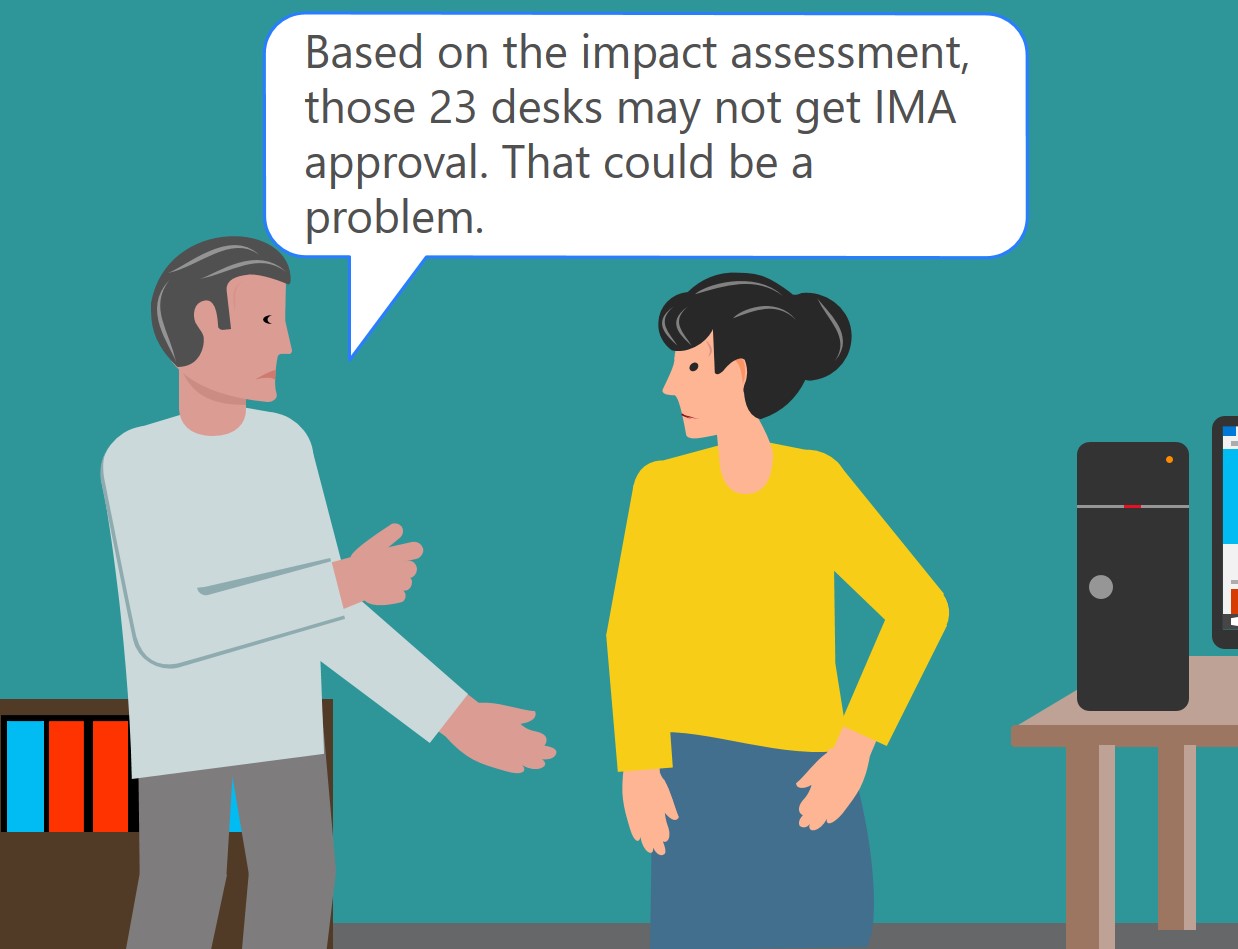 To ensure capital optimization, banks must simulate each trading desk using both SA and IMA, and then evaluate the results for each desk and the enterprise as a whole. While SA typically requires higher regulatory capital, it is more straightforward to implement and operate. IMA will likely result in lower capital costs, but it is a more intensive approach and requires a 12-month accreditation process to achieve regulatory approval for each desk. Although the deadline seems far in the future, regulators are already asking banks to determine which approach they will implement on their desks.
To ensure capital optimization, banks must simulate each trading desk using both SA and IMA, and then evaluate the results for each desk and the enterprise as a whole. While SA typically requires higher regulatory capital, it is more straightforward to implement and operate. IMA will likely result in lower capital costs, but it is a more intensive approach and requires a 12-month accreditation process to achieve regulatory approval for each desk. Although the deadline seems far in the future, regulators are already asking banks to determine which approach they will implement on their desks.
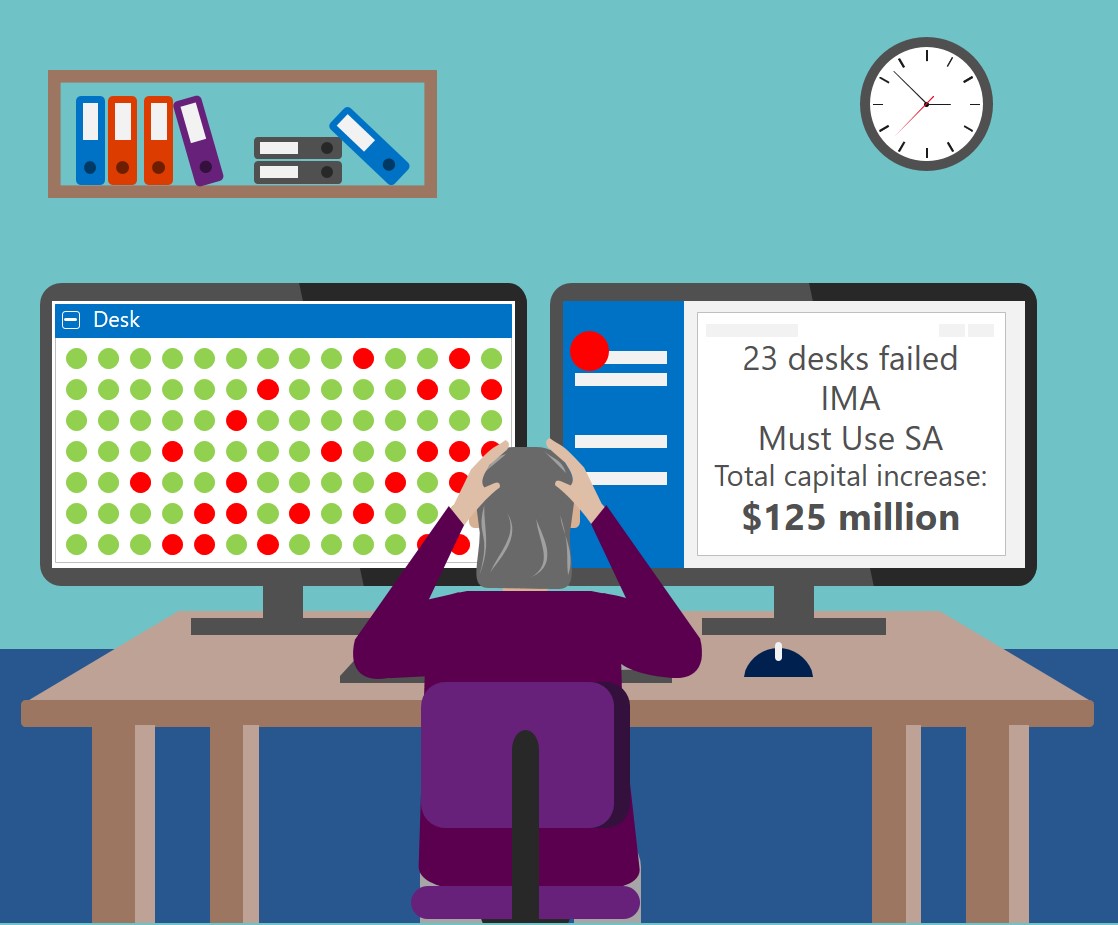 The consequence of not selecting the appropriate modeling approach for each desk can be dramatic. If a desk loses IMA approval, it must revert to SA and will need to meet those reporting requirements.
The consequence of not selecting the appropriate modeling approach for each desk can be dramatic. If a desk loses IMA approval, it must revert to SA and will need to meet those reporting requirements.
In some cases, this change could transform a profitable desk into one with such high capital requirements that the only practical decision is to close the desk. To confidently address these business decisions, banks must accurately and proactively determine the best modeling approach for each desk and implement the operational and technology changes needed to ensure continued regulatory approval of IMA desks.
What is your technology strategy?
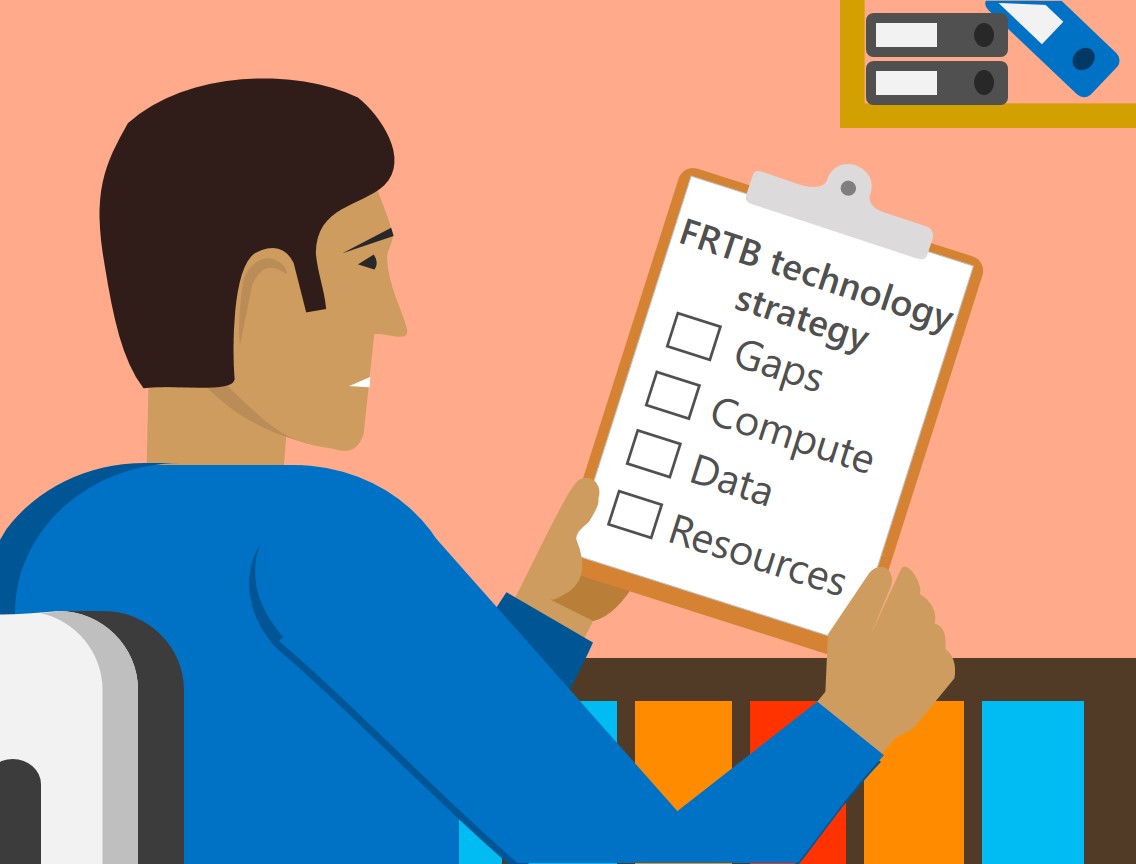 There are multiple factors to consider when choosing the right technology infrastructure to enable FRTB implementation[3]. The two key considerations are the amount of work needed to set up the solution; and how to integrate the data and compute environments. First, banks need to conduct a comprehensive analysis to determine the gaps in current infrastructure, computational requirements, data management requirements, and the time and resources needed to deploy a solution. They may want to develop an internal solution by patching together and modifying existing systems, but this is risky. This chaotic and slow approach puts institutions at risk of building an overly complex solution which ultimately doesn’t meet the strict FRTB regulation, and doesn’t provide enough time to reapply for approval.
There are multiple factors to consider when choosing the right technology infrastructure to enable FRTB implementation[3]. The two key considerations are the amount of work needed to set up the solution; and how to integrate the data and compute environments. First, banks need to conduct a comprehensive analysis to determine the gaps in current infrastructure, computational requirements, data management requirements, and the time and resources needed to deploy a solution. They may want to develop an internal solution by patching together and modifying existing systems, but this is risky. This chaotic and slow approach puts institutions at risk of building an overly complex solution which ultimately doesn’t meet the strict FRTB regulation, and doesn’t provide enough time to reapply for approval.
The most effective business architecture will be one that combines the best data sources, strong visualized analytics, and scalable and cost-effective computational power. Banks need to find a solution that brings these requirements together in a single system that delivers the right speed, scale and configuration. In an ideal world, banks would find a solution capable of running and re-running reports and calculations multiple times on-demand each day, enabling them to conduct “what-if” analyses and quickly account for and deal with any problems that arise during the implementation and accreditation processes.
Have you considered a cloud solution?
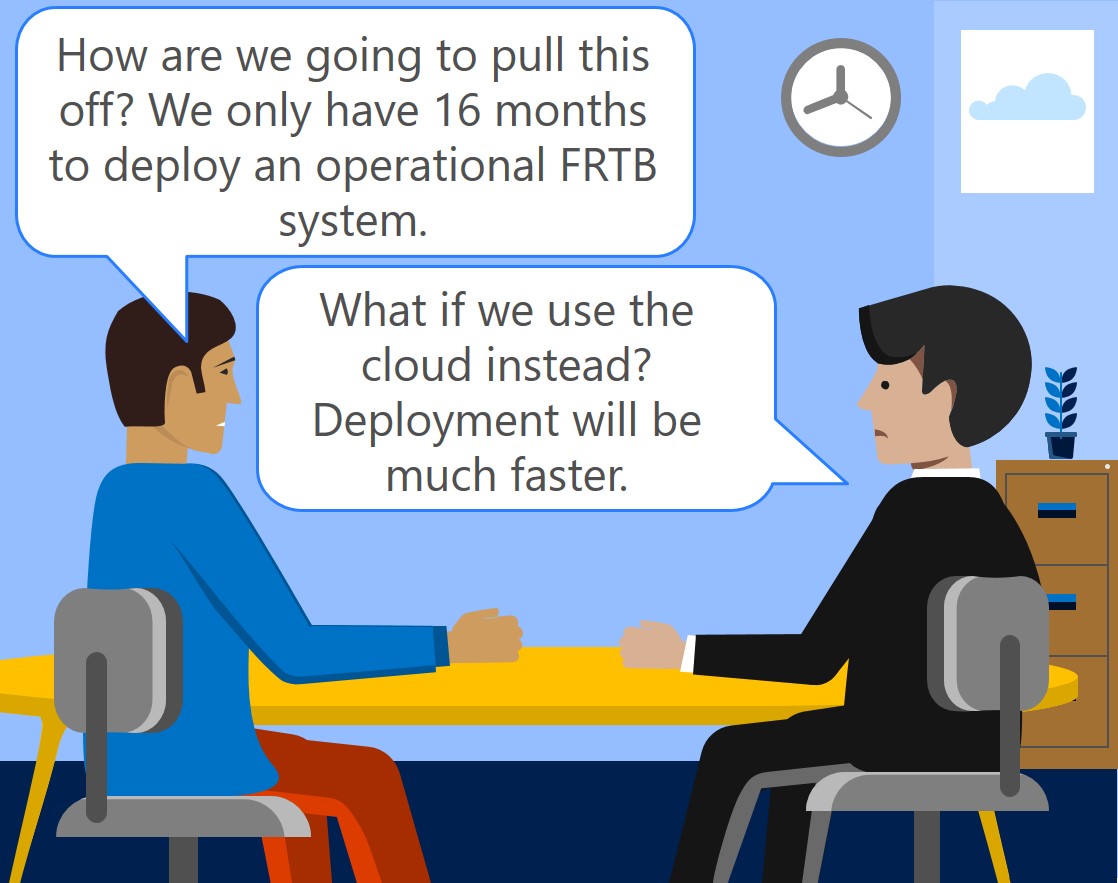 The cloud enables banks to meet compute and data management requirements in an agile environment while reducing IT operating costs. Because of these undeniable benefits, more and more banks are moving to the public cloud. As an example, JP Morgan recently announced a move to public cloud, citing efficiency and scalability as two of the reasons for making the move[4]. The cloud was built for complex, computationally demanding business problems like FRTB – empowering banks with a high-performance, cost-effective, and quickly implementable system.
The cloud enables banks to meet compute and data management requirements in an agile environment while reducing IT operating costs. Because of these undeniable benefits, more and more banks are moving to the public cloud. As an example, JP Morgan recently announced a move to public cloud, citing efficiency and scalability as two of the reasons for making the move[4]. The cloud was built for complex, computationally demanding business problems like FRTB – empowering banks with a high-performance, cost-effective, and quickly implementable system.
Numerix FRTB can help
There is a lot to do, and banks have a lot of questions. Numerix FRTB, built on Microsoft Cloud technology, empowers banks to be proactive and start moving toward answers. Numerix FRTB is available now, unlike “vaporware” solutions on the market, and gets banks on the path toward FRTB impact assessment and ongoing compliance. Numerix FRTB helps trading desks optimize their capital efficiency while giving the risk department a solution which deploys rapidly. The solution scales the computational power needed to run reports in minutes instead of hours, ensuring banks spend their time on strategic analysis and informed decision-making rather than waiting hours for calculations to run. This accelerates the time to implementation and FRTB readiness.
Learn more about Numerix FRTB, and watch the demo on Microsoft AppSource.
[1] http://www.bis.org/press/p160114.htm
[2] http://www.risk.net/risk-management/market-risk/2454331/frtb-packs-bigger-than-expected-capital-punch
[3] http://www.numerix.com/white-paper/frtb-technology-considerations-and-what-you-need-know
[4] https://blogs.wsj.com/cio/2017/03/30/j-p-morgan-set-to-run-first-apps-in-public-cloud/
Follow us @msftfinserv




